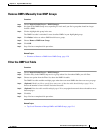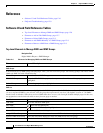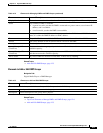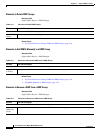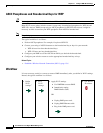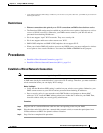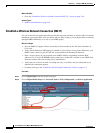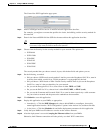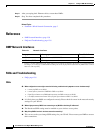
13-3
User Guide for Cisco Digital Media Manager 5.2.x
OL-15762-03
Chapter 13 Configure DMP Wi-Fi Settings
Concepts
P
Return to Top
PEAP server
Protected EAP server, which combines centralized two-way authentication with dynamically generated
wireless equivalent privacy keys or WEP keys.
See also AAA, EAP-MD5 server, and WEP keys.
PSK
Pre-Shared Key.
S
Return to Top
SSID
Service Set ID. It is a unique identifier that client devices use to associate with the access point. The
SSID helps client devices distinguish among multiple wireless networks in the same vicinity. The SSID
can be any alphanumeric entry up to 32 characters long.
Caution The Broadcast SSID setting must be enabled on your wireless access points. Otherwise, your DMPs are
prevented from connecting to your WLAN or obtaining IP addresses.
Caution When you change SSID settings for your WLAN, your DMPs lose their wireless network connections.
Because they are disconnected, they cannot reconnect automatically. In this case, affected DMPs will appear to
associate to your WLAN access point but will not receive any IP address.
T
Return to Top
TKIP
Temporal Key Integrity Protocol, also known as key hashing, is used as part of server-based
EAP authentication.
W
Return to Top
WEP
Wired Equivalent Privacy is a method to encrypt data transmitted on a wireless network.
WEP keys
Wired equivalent privacy (WEP) keys are the IEEE 802.11b standard that offers a mechanism for
securing wireless LAN data streams. The goals of WEP include access control to prevent unauthorized
users who lack a correct WEP key from gaining access to the network, and privacy to protect wireless
LAN data streams by encrypting them and allowing de-encryption only by users with the correct
WEP keys.
WPA
Wi-Fi Protected Access. WPA is a standards-based, interoperable security enhancement that strongly
increases the level of data protection and access control for existing and future wireless LAN systems.
It is derived from and will be forward-compatible with the upcoming IEEE 802.11i standard. WPA
leverages TKIP for data protection and 802.1X for authenticated key management.



